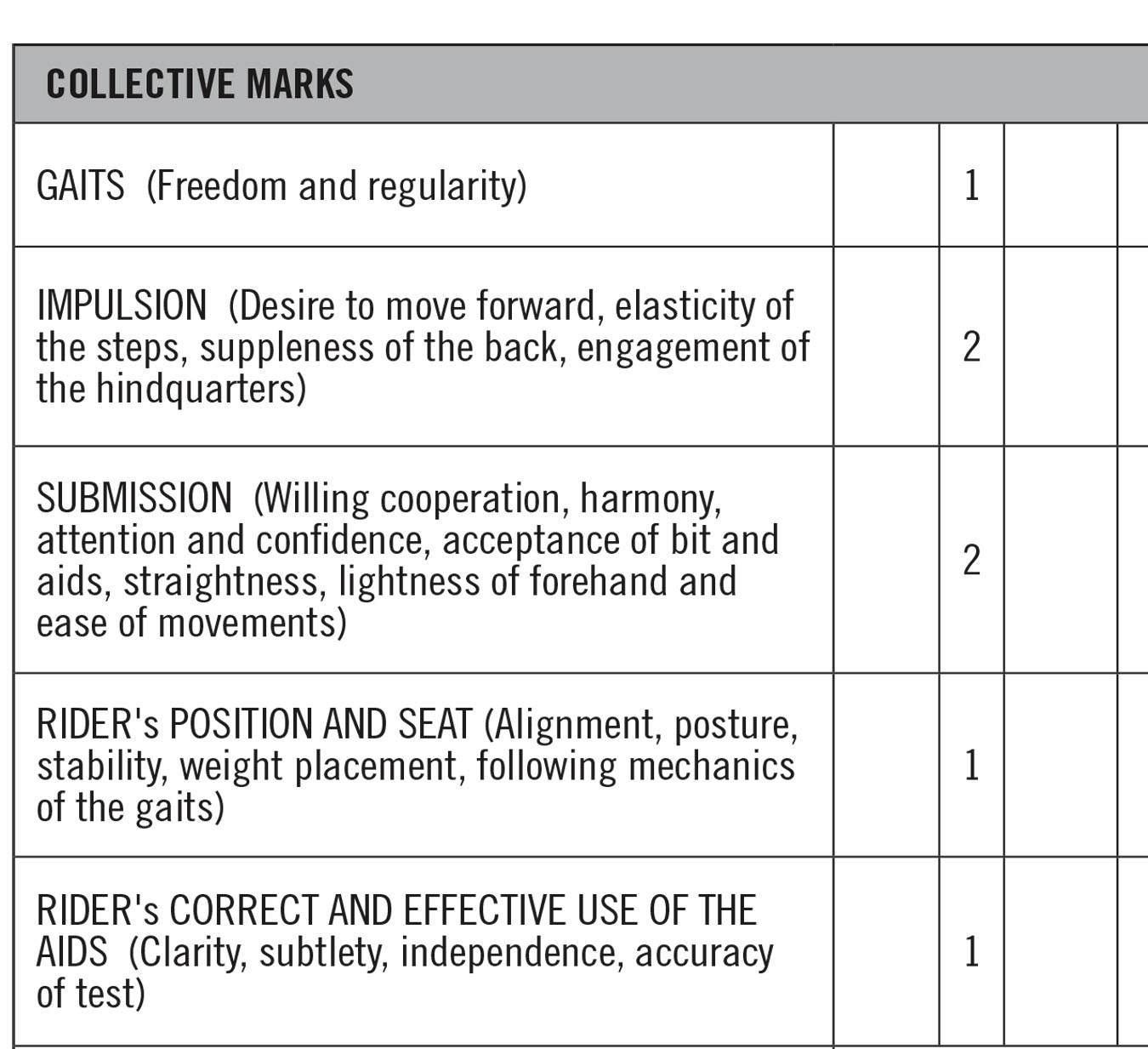(“It takes away a good teaching tool.”)
The committees which write new dressage tests serve many different constituencies. The tests are designed to sort out the top horses and send them on into upper level competition and award them the recognition they deserve. The tests also must be concise enough to serve the needs of show management who often want to fit as many rides into an arena as possible in the time they have available. And especially for riders who are not finished, they are part of the training process to help them and their horses develop in a logical, methodical, progressive manner. In other words, they are meant to give the riders valuable feedback. It would be nice to think those goals are mutually compatible, but alas, at times they are not.
At issue is the Collective Marks, that set of numbers at the bottom of each test which are awarded after the ride is finished to further explain what’s good, what’s bad, and what facets of the training need to be improved for an overall better score.
They have been tinkered with by committees over the years. You may remember when there was just one Rider score. It had a coefficient of two. That score was an amalgam of many qualities, and so it often came out as a compromise averaging good and bad but dissimilar qualities—a generic but meaningless 6. It made sense to split it into two separate scores with single coefficients, one which dealt with the rider’s position, balance, and alignment, the second score to evaluate the correctness and effectiveness of the aids. Breaking it down that way allowed us as judges to send a more useful message to the riders.
Another time the coefficients in the Collectives were juggled around decreasing the overall value of the Gaits score. It was decided that a better moving horse is already rewarded in the individual movements so why credit him twice at the expense of more average but well trained horses by over weighting the gaits? Whether you follow this logic or not, The FEI and more recently the USEA (Eventors) have taken this one step further by reducing all the Collectives down to a single score which is supposed to reflect horse and rider harmony.
I find this disappointing because it takes away a good teaching tool to use when I judge. If a student of mine comes home from a show and hands me her scored test, the first thing I look at is the Collectives. It’s not just the total—it’s the distribution of the scores. Remember we’re talking Gaits, Impulsion, and Submission. If you don’t already know, you should read the fine print after each of those categories to see all that they entail.

The point is that although the numbers would add up the same, a judge who gives you 7-6-5 is painting a very different picture than 6-6–6 or 8-6-4. If a very unspectacular mover can get a good submission score and a good rider score it’s more meaningful from a training standpoint than another horse who is rewarded for his innate qualities even though assorted faults show up in his execution of movements.
When I judge as I watch a ride unfold, I am already formulating what I think the Collectives should be. (Remembering that if I discover there’s no left lead canter or that in the second half of the test he explodes and runs off down the arena, I will have to reevaluate).
It serves no good purpose to take this “explaining tool” away from us. The scoreboard tells what we gave. The Collectives help reveal why.
